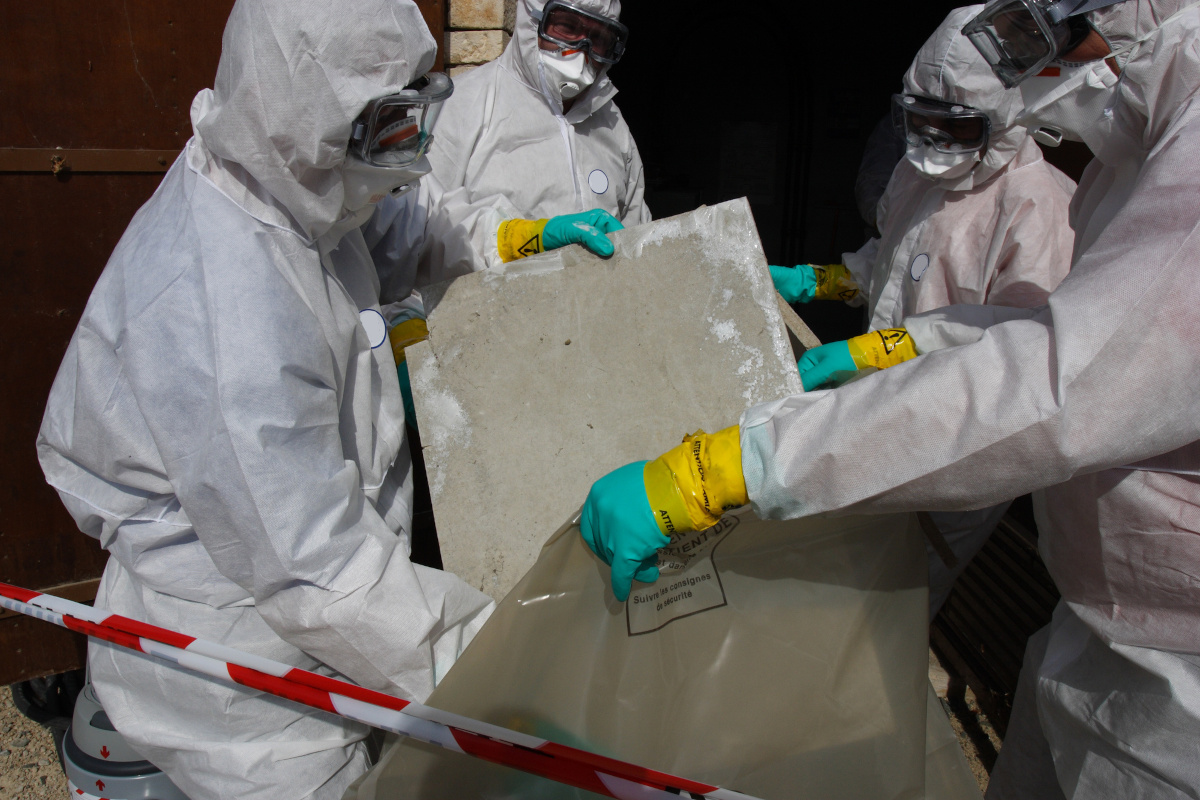Handling Asbestos: What To Do If You Discover It In Your Apartment

Asbestos, once hailed as a 'miracle material' for its fire-resistant properties, has been identified as a health hazard. If you discover its presence in your apartment, knowing the proper steps to ensure safety becomes essential. Let's explore how to handle this situation responsibly and securely.
Understand The Risks
First, it's crucial to understand why asbestos is dangerous. When asbestos fibers are inhaled, they become trapped in the lungs, leading to potential health complications over time. These tiny, resilient fibers can cause inflammation and scarring, eventually leading to serious lung diseases.
The primary health risks associated with prolonged asbestos exposure include asbestosis, a progressive lung disease, and two forms of cancer: lung cancer and mesothelioma. That said, if you've identified asbestos in your apartment, comprehending these risks underscores the importance of taking immediate, cautious action. The danger isn't in the material's presence alone but in the potential release and inhalation of these harmful fibers.
Do Not Disturb It
Finding asbestos might trigger a sense of urgency to get rid of it. However, it's essential to resist this impulse. Disturbing asbestos-containing materials can release harmful fibers into the air, increasing the risk of inhalation. Instead of attempting to clean or remove it yourself, it's best to leave the material undisturbed.
Actions such as sweeping, dusting, or vacuuming areas where asbestos fibers may have settled can inadvertently spread them throughout the apartment. When left undisturbed, asbestos poses less of an immediate threat, emphasizing the importance of careful, professional intervention.
Limit Access To The Area
Upon identifying a potential asbestos-contaminated zone, it's crucial to restrict entry to that space. By minimizing foot traffic, you reduce the chance of fibers being spread or agitated, safeguarding other areas of your home.
Consider placing barriers or tape to serve as a visual reminder for anyone in the apartment. If feasible, keep doors closed and seal off any vents to the affected room, helping to contain any potentially airborne fibers. Taking these precautions minimizes risk, ensuring the designated area remains isolated until professionals can address the situation.
Contact A Professional
Upon suspecting the presence of asbestos, it's imperative to seek expert intervention. Asbestos removal isn't a task for amateurs; it demands specialized skills and equipment. Moreover, there are significant benefits you can get by hiring professionals.
Engaging with certified asbestos professionals ensures that the situation is evaluated accurately and appropriate measures are implemented. They'll conduct tests to confirm the material's presence and devise a safe removal strategy. Their expertise ensures not only the containment of potential hazards but also the restoration of your peace of mind.
Floridians from Orange County like to view these asbestos testing services in Orlando whenever they suspect older materials may pose a risk. This proactive step helps protect both their health and the long-term safety of their homes.
Remember, when it comes to asbestos, cutting corners can jeopardize health and safety. Trusting professionals guarantees the thorough and secure handling of this sensitive issue.

Notify Your Landlord
If you're renting, informing your landlord about the asbestos discovery is essential. In most states, landlords are responsible for ensuring their properties are free from known hazards, including asbestos. By notifying them, you're not only protecting your rights as a tenant but also facilitating quicker remediation.
Additionally, the landlord may already be aware of the building's asbestos history or have resources to address the situation swiftly. Cooperation between tenants and landlords in these scenarios is critical, ensuring everyone remains safe and the matter is addressed professionally and efficiently.
Stay Informed And Prepared
While you're waiting for the professionals to handle the situation, it's a good idea to stay informed. Take the initiative to educate yourself about asbestos regulations in your state and your rights as a tenant. Being well-informed empowers you to make sound decisions and advocate for your safety effectively.
Furthermore, prepare for possible next steps, whether that's temporary relocation or engaging with asbestos removal professionals. Having a game plan in place allows for a smooth, efficient response, minimizing disruptions and ensuring your living environment returns to a safe state as promptly as possible.
Consider Temporary Relocation
In extreme cases, consider relocating temporarily. This ensures you're not continually exposed while the issue is being addressed. Whether it's staying with a trusted friend, family member, or a short-term rental, your health should be the primary concern.
Discuss potential accommodations or adjustments with your landlord, especially if the remediation process is expected to be lengthy. Remember, while relocation might seem inconvenient, prioritizing your health and safety is paramount.
Avoiding Future Asbestos Issues
Once the immediate asbestos concern is addressed, it's wise to adopt a proactive approach for the future. When considering new apartments or rentals, always inquire about any previous asbestos issues or related renovations. A property's history can offer insights and potentially help you avoid similar situations down the line.
Familiarize yourself with common building materials used in homes built during peak asbestos use, typically before the 1980s. This knowledge equips you with the ability to recognize potential risks earlier, ensuring that your living environment remains secure and health-centric.
Additionally, taking measures to improve air quality in your living space can further safeguard against potential health risks. Regular ventilation and the use of air purifiers can play a significant role in maintaining a healthy indoor environment.
Conclusion
Discovering asbestos in your living space can be unsettling. However, with the right approach and professional guidance, it's a manageable situation. Always prioritize your safety, stay informed, and take appropriate action to ensure your home remains a safe haven.